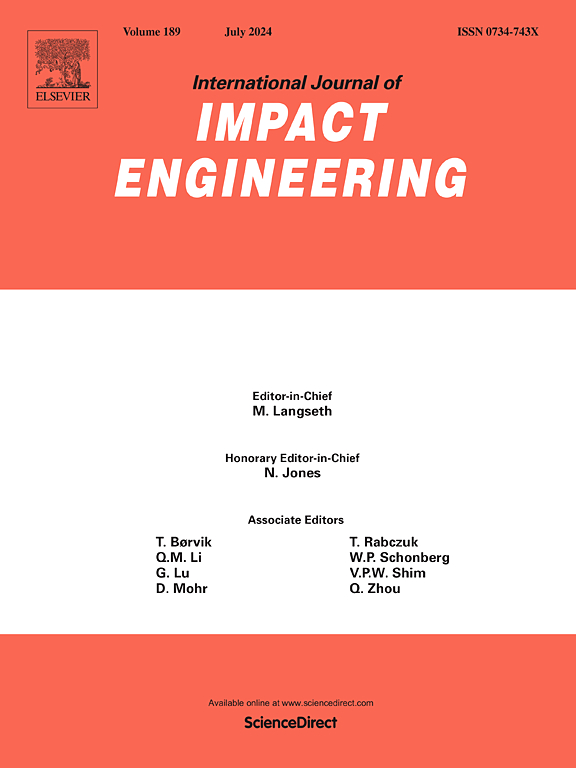Impact initiation of a semi-confined high explosive target by hypervelocity debris
IF 5.1
2区 工程技术
Q1 ENGINEERING, MECHANICAL
International Journal of Impact Engineering
Pub Date : 2025-06-18
DOI:10.1016/j.ijimpeng.2025.105407
引用次数: 0
Abstract
An experimental and numerical study has been performed, where initiation of a high explosive target by high velocity debris from a tungsten sphere was investigated. The target consisted of two spaced plates with the high explosive mounted directly behind the inner plate. Both the impact velocity and target obliquity have been varied to find impact conditions that lead to initiation of the high explosive. Numerical simulations were used to estimate critical impact velocities for a series of impact obliquities. The critical impact velocity was found to increase with increasing obliquity, presumably due to the reduction in residual velocity of the debris cloud, and with the reduction of the effective diameter of the debris cloud as the obliquity increases above 30°.
超高速碎片对半密闭高爆靶的起爆冲击
本文对钨球高速碎片对高爆靶的起爆进行了实验和数值研究。目标由两个间隔的板组成,高爆药直接安装在内板的后面。改变了冲击速度和目标倾角,找到了导致高爆起爆的冲击条件。采用数值模拟方法估算了一系列冲击倾斜度下的临界冲击速度。发现临界撞击速度随着倾角的增加而增加,可能是由于碎片云的残余速度减少,并且随着倾角超过30°而增加碎片云的有效直径减小。
本文章由计算机程序翻译,如有差异,请以英文原文为准。
求助全文
约1分钟内获得全文
求助全文
来源期刊

International Journal of Impact Engineering
工程技术-工程:机械
CiteScore
8.70
自引率
13.70%
发文量
241
审稿时长
52 days
期刊介绍:
The International Journal of Impact Engineering, established in 1983 publishes original research findings related to the response of structures, components and materials subjected to impact, blast and high-rate loading. Areas relevant to the journal encompass the following general topics and those associated with them:
-Behaviour and failure of structures and materials under impact and blast loading
-Systems for protection and absorption of impact and blast loading
-Terminal ballistics
-Dynamic behaviour and failure of materials including plasticity and fracture
-Stress waves
-Structural crashworthiness
-High-rate mechanical and forming processes
-Impact, blast and high-rate loading/measurement techniques and their applications
 求助内容:
求助内容: 应助结果提醒方式:
应助结果提醒方式:


